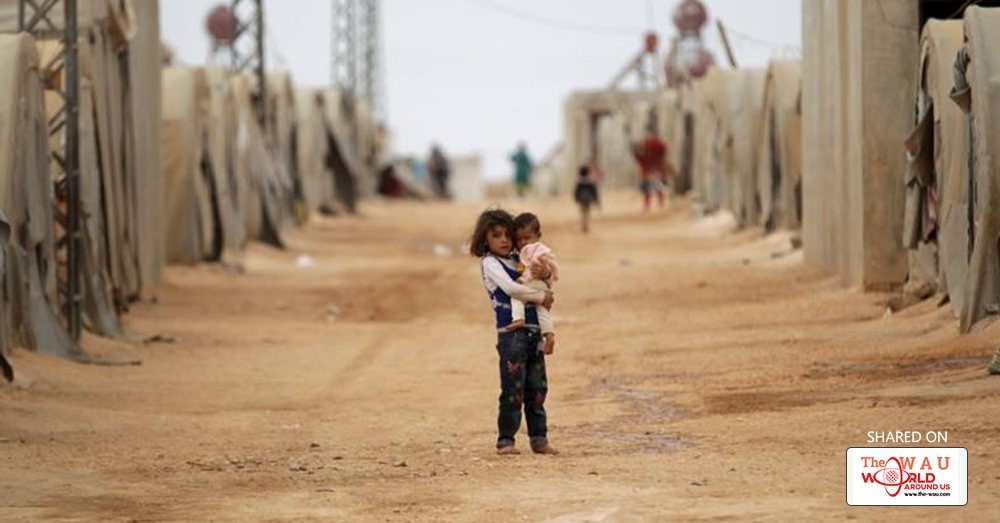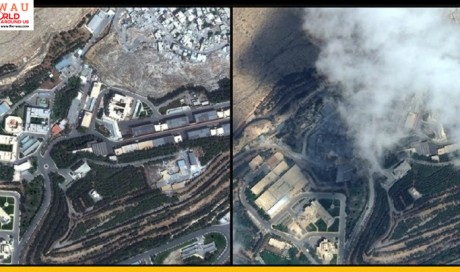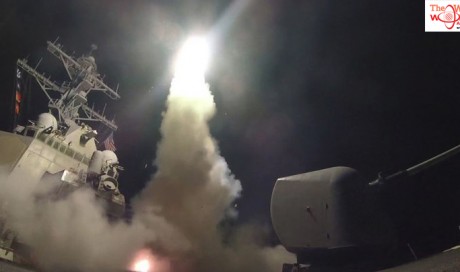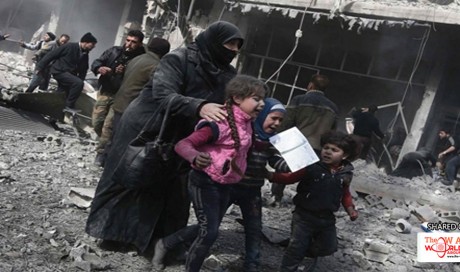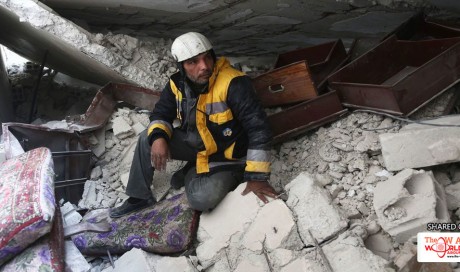A new deal aimed at reducing violence in Syria is now in effect, but questions remain as to its implementation and its consequences.
The agreement signed on Thursday by Iran, Russia and Turkey in the Kazakh capital, Astana, is the latest in a series of ceasefire proposals aimed at ending Syria's war, now in its seventh year.
The plan calls for the cessation of hostilities between rebel groups and forces fighting on behalf of Bashar al-Assad's government in four so-called "de-escalation zones" in mainly opposition-held areas of the country.
Russia, Turkey and Iran are to act as guarantors.
The deal covers four areas:
- Zone 1: Idlib province, as well as northeastern areas of Latakia province, western areas of Aleppo province and northern areas of Hama province. There are more than one million civilians in this zone and its rebel factions are dominated by an al-Qaeda-linked alliance.
- Zone 2: The Rastan and Talbiseh enclave in northern Homs province. There are approximately 180,000 civilians in this zone and its network of rebel groups includes al-Qaeda-linked fighters.
- Zone 3: Eastern Ghouta in the northern Damascus countryside. Controlled by Jaish al-Islam, a powerful rebel faction that is participating in the Astana talks. It is home to about 690,000 civilians. This zone does not include the adjacent, government-besieged area of Qaboun.
- Zone 4: The rebel-controlled south along the border with Jordan that includes parts of Deraa and Quneitra provinces. Up to 800,000 civilians live there.
The plan specifies that a six-month renewable truce will begin on Saturday and that Assad's air force will halt all flights over the de-escalation areas.
Russia will continue to fly over the areas but will refrain from conducting air raids. The Syrian government is to allow "unhindered" humanitarian aid into rebel-held areas, and public services like electricity and water are to be restored where they have been cut off.
The two-track political process is also set to continue, with talks scheduled to take place at the UN in Geneva, potentially at the end of May, and another round of Russian-led talks in Kazakhstan in mid-July.
The deal allows its guarantors to continue targeting the Islamic State of Iraq and the Levant (ISIL, also known as ISIS) and al-Qaeda-linked groups inside the safe zones.
While ISIL has little-to-no presence inside the areas in question, the al-Qaeda-linked Tahrir al-Sham alliance works closely with other rebel groups in all of the four proposed de-escalation areas.
Previous ceasefires have collapsed as Russian and Syrian jets continued to hit civilians under the premise of targeting al-Qaeda-affiliated fighters.
"This leaves Tahrir al-Sham with every reason to rally opposition to the Astana deal and to torpedo it through bombings and other provocations," Syria analyst Aron Lund wrote in an article on Friday.
"It also seems likely to provoke clashes between the jihadis and those rebels who intend to abide by the Astana plan, which could, in turn, tempt the al-Assad government to seize new opportunities for advancement."
Alexander Fomin, Russia's deputy defence minister, said that if implemented, the deal would allow for the separation of the opposition from ISIL fighters and those affiliated with al-Qaeda. He did not elaborate.
The Syrian government has said that although it will abide by the agreement, it would continue fighting "terrorism" wherever it exists, parlance for most armed rebel groups fighting government troops.

The Pentagon said the de-escalation agreement would not affect the US-led air campaign against ISIL.
"The coalition will continue to target ISIS wherever they operate to ensure they have no sanctuary," said Pentagon spokesman Marine Maj. Adrian JT Rankine-Galloway, using an alternative acronym for the hardline group.
As in previous deals struck by foreign backers of the warring sides in Syria, there is no clear mechanism to resolve conflicts and violations.
This is the first plan, however, to envisage armed foreign monitors on the ground in Syria.
Troops from the three countries are expected to help secure the safe zones. But an official with Russia's military general staff said other countries may eventually have a role in enforcing the de-escalation areas.
Sergei Rudskoi, a Russian colonel-general, told reporters on Friday that the "work of checkpoints and observation posts, as well as the management of security zones, will be carried out by the personnel and formations of Russia, Turkey and Iran".
Russian officials said it will be at least another month until the details are worked out and the safe areas established. A joint working group of the three guarantors is expected to be created later this month.
Turkey, whose agenda in Syria has significantly narrowed over the past year, is a major rebel backer and its forces occupy a sizeable swath of territory in the country's north.
Russia and Iran are key Assad allies and both are viewed as foreign occupying forces by his opponents. Iran's presence as a guarantor to the deal has proven particularly problematic for the opposition.
Osama Abo Zayd, a spokesman for the Syrian military factions at the Kazakhstan talks, said on Friday that it was "incomprehensible" for Iran to act as a guarantor of the deal.
"We can't imagine Iran playing a role of peace," Abo Zayd said.
Share This Post

